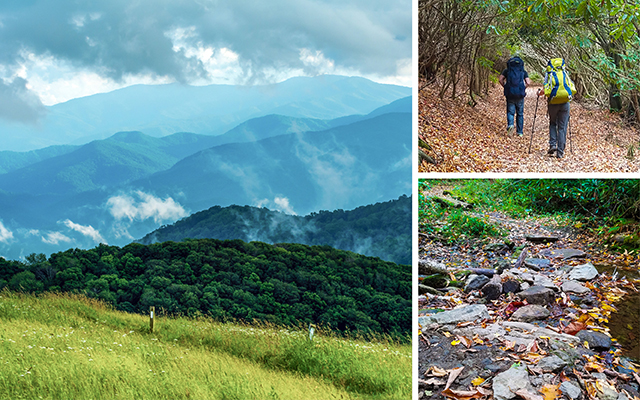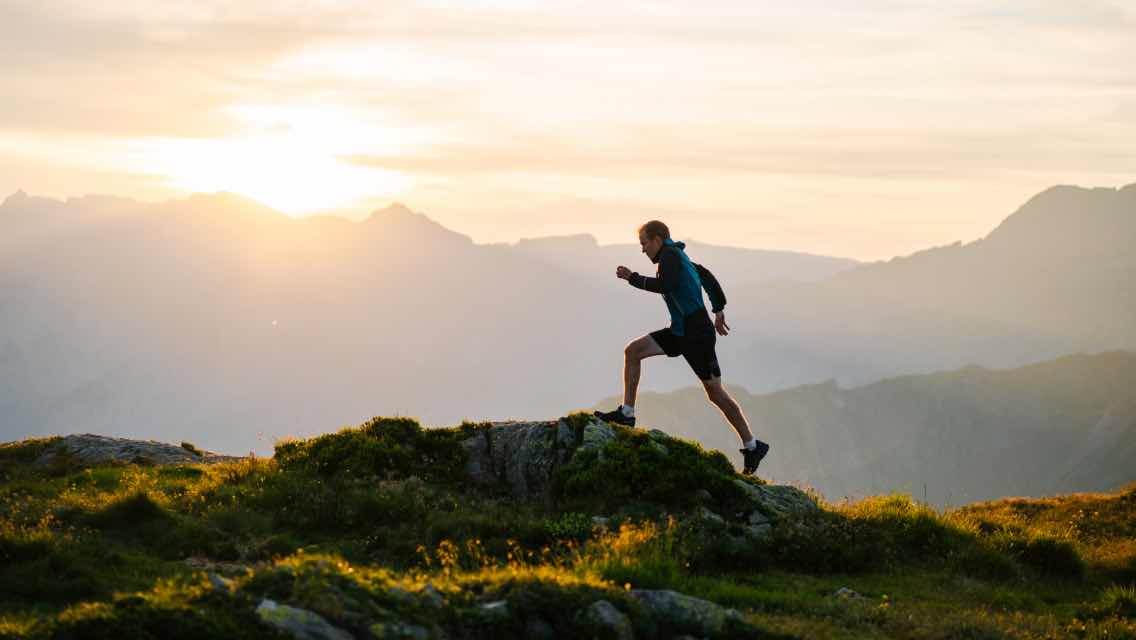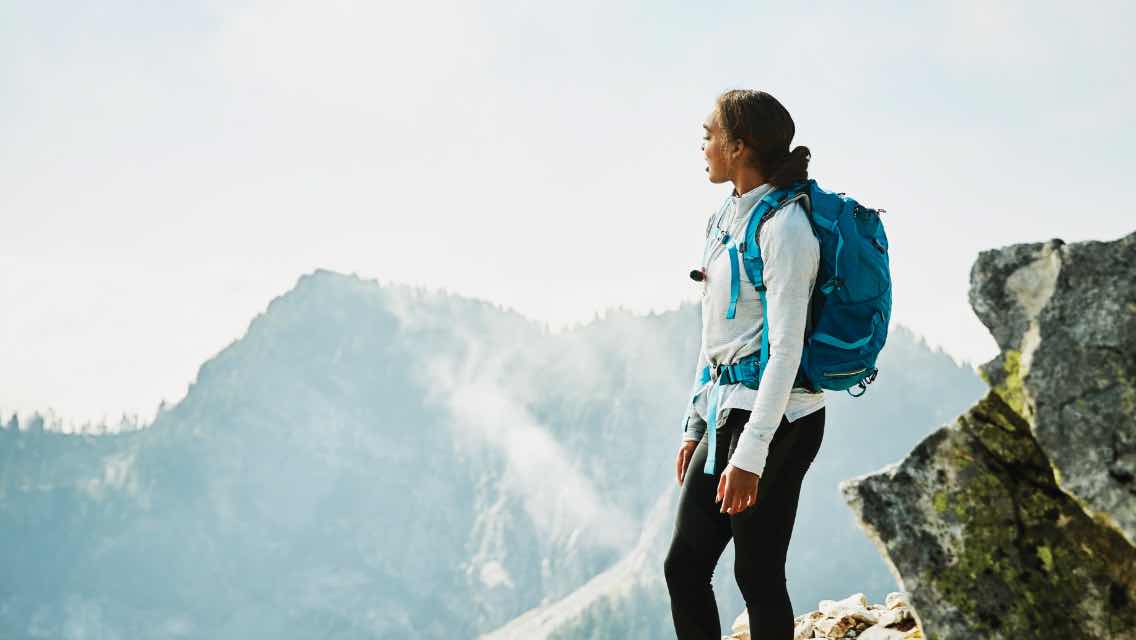In 2014, writer and homebrewer Derek Dellinger spent a year eating and drinking only foods created by microbes. He chronicled this unorthodox diet in The Fermented Man: A Year on the Frontlines of a Food Revolution.
Four years later, the avid hiker and shutterbug packed up his Toyota Prius and set out on a different adventure: exploring America’s quintessential single-day hikes. His four-month journey among iconic landscapes took him from the Pacific Northwest to Texas to Maine, with a total of 130,000 feet climbed — the equivalent of hiking up and down Mount Everest from sea level four and a half times.
His stunning photos of alpine lakes, craggy peaks, vast canyons, and thick forests illustrate a helpful new hiking guide (the third he’s authored), America’s Best Day Hikes: Spectacular Single-Day Hikes Across the States. Complete with trail overviews as well as safety and planning tips, the book highlights the various reasons backpackers and hikers of all skill levels might want to make a detour or a special journey to these spots.
“I hope a book like this shows that hiking is a tool that we can use to make sure we’re seeing the natural world and natural state of the earth as it is, not as an Instagram post,” Dellinger says. “Taking beautiful pictures is incredibly satisfying and fun, but you have to remind yourself to look beyond the lens.”
He also wants his book to inspire readers to take public lands and wilderness seriously and deepen their connections with the natural world. “It is startling to observe just how many people view these few still-wild places as little more than an amusement, a ride established and gated entirely for our enjoyment.”
Experience Life | What are some things you learned while traveling the country to write this book?
Derek Dellinger | It was eye-opening to drive around and spend a summer — the busy season for national parks — seeing how overwhelmed they can get.
Certain parks have been inundated with visitors in recent years. Glacier National Park on the Canadian–Montana border, for example, is a fairly obscure, remote place, but has seen its visitor numbers rise significantly. [According to the National Park Service, Glacier was the 10th-most-visited park in 2018 and has seen a 24 percent increase in visitors since 2011–2012.]
I think our Instagram and Facebook culture is partly driving these increases. These beautiful places are getting more exposure, and I think seeing these amazing images in newsfeeds is changing how people spend their vacation and free time.
The positive is that people who are visiting are valuing experiences more than possessions and consumption. At the same time, the increase in visitors poses challenges for how these parks are going to be managed; how sustainable they are with the increased traffic, noise, and human footprints they’re getting; and just how equipped the national park system is to handle it all. [Federal budgets of late have called for spending cuts to the National Park Service and Department of the Interior despite a budget shortfall and record attendance in recent years.]
More parks will probably have to go to a shuttle system, the way Zion National Park in Utah does, instead of allowing you to drive through whenever. We’ll have to have a national conversation about how we want to manage parks and public lands and how much we value wild places.
EL | With all the choices available, how did you decide which hiking areas to include in your book?
DD | I spent about nine months researching the book before actually going out to do all of the hikes myself. I interviewed people — polled hikers; asked friends and strangers alike about the places they love or memorable trails; read other books and articles; and compiled a big list that I whittled down to 50.
EL | Was there a consensus about any of the hikes?
DD | Yes. Angels Landing in Zion National Park was far and away the most recommended hike in the country. The only other one that was close was Precipice Trail in Maine’s Acadia National Park.
EL | You chose to highlight hikes by region rather than state. Why?
DD | When we look at the country for the purposes of something like planning a trip, logistically, it makes sense to look at things in terms of state boundaries to know where you’re going and what you’re going to do.
But state boundaries are geographically meaningless. They’re just things that we made up over time that are arbitrary distinctions and designations from the perspective of nature. To me, if you really want to look at the country from a landscape perspective, it makes more sense to break things down by region and then look at each region from a geographical perspective.
So, the hikes are clustered in a way that I hope captures what the American landscape feels like. They offer a good — not complete — representation of what hiking to enjoy the geography of the United States is like. They give you a taste of notable features present in certain regions.
For example, in Colorado, you have a 14er or an alpine lake hike because there are so many of those in that area.
EL | Now that some time has passed since you’ve hiked these trails, are any more memorable for you than others?
DD | Absolutely. It’s obviously always difficult to pick favorites. But if I had to pick a top three that stand out and trails I wish I could do every day, one would be the Chain Lakes Loop in northern Washington, which is near Mt. Baker in the Northern Cascades on the Canadian border. Here you find these thick, deep snowdrifts and gorgeous turquoise alpine lakes along with massive snow-covered mountains all around you. I was there in late July and it still felt like a quiet, wintery scene.
I also think the scenery in Colorado is absolutely fantastic. It’s loaded with amazing trails, but the one I included in the book is Ice Lake Basin to Island Lake. Again, you’re hiking to these beautiful, pristine alpine lakes surrounded by craggy summits. I guess I have a thing for alpine lakes, but I think they’re kind of universally appealing.
The final area is Mount Katahdin, the northern terminus of the Appalachian Trail in northern Maine. It’s important from a hiking standpoint because you’re on the AT surrounded by people who are celebrating completing their thru-hike.
It’s also challenging. You go over the Knife Edge, a fairly difficult rock scramble with steep, 2,000-foot-drop cliffs on either side of you. At the end you’re exhausted and beat up, but it’s worth it because it’s a challenge that you feel enriched from doing.




This Post Has 0 Comments